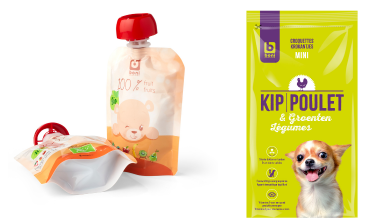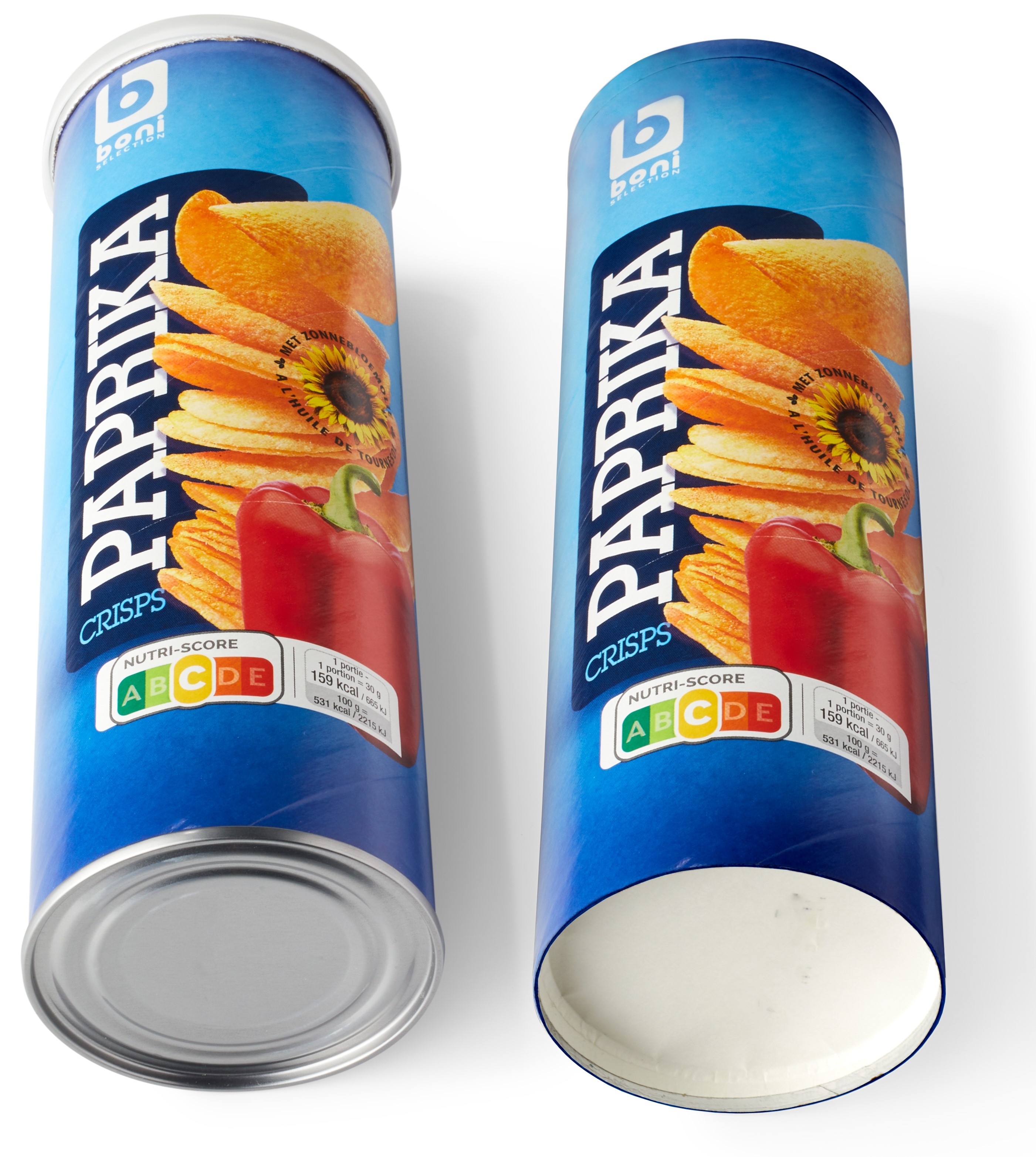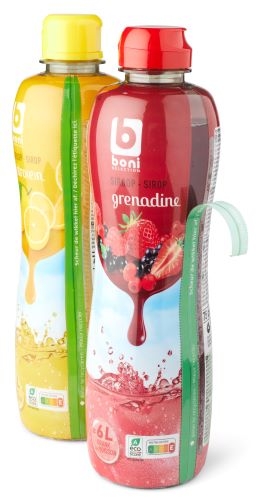"We are adopting a structured approach to replace the small group of non-recyclable packaging in our range. Our first priority is the so-called obstructive packaging" says Nelle Thyssen, Sustainable Packaging Expert at Colruyt Group.
The obstructive packaging category was introduced in the Fost Plus declaration 2021 by the Interregional Packaging Commission. "The term refers to packaging that is not recyclable and can also disrupt the sorting and recycling processes," explained Niko Vanhaelen, account manager at Fost Plus.
The packaging is given a discouraging Green Dot rate, which is at least double the second highest rate paid by companies for collection, sorting and recycling. "With such a high rate, we want to encourage companies to avoid this packaging and replace it with recyclable and more sustainable alternatives." Meanwhile, a second, comprehensive list of nuisance packaging was published.
Top priority
For Colruyt Group, obstructive packaging is already a top priority. "It also fits into our general sustainability strategy which is extensively focused on packaging. For example, by 2025 all packaging of our private labels should be recyclable or reusable," says Nelle Thyssen, Sustainable Packaging Expert.
In total, by the end of 2021, Colruyt Group identified some 85 items that can be classified under the obstructive packaging category. "It concerns a relatively small part of our range anyway: less than 0.5% by weight. The vast majority of our packaging is already recyclable today and can be sorted by consumers as PMD, glass or paper-carton. However, this doesn’t mean tackling the remaining group is less important," Nelle Thyssen stressed.
Some telling examples of adjustments already made:
From multilayered to mono-material

A first problematic group is multilayered packaging and, more specifically, aluminium laminates, which are used e.g. for beverage pouches, wet pet food, baby food and hot sauces. These typically consist of a plastic and aluminium laminate, which is impossible to separate from each other, ultimately resulting in the materials being lost.
"The solution is switching to packaging made of a single recyclable material," explains Nelle Thyssen. "Until recently, relatively few alternatives with the right properties were available on the market, but this is now changing. As everyone in the industry wants to get rid of these multilayered packages, packaging producers invested heavily in the development of mono-material alternatives."
Crisp tubes become greencans

A second obstructive type of packaging is the crisp tube. It consists of a laminated cardboard packaging with a bottom made of aluminium. "In the course of June 2023, we switched to the so-called Greencan, a cardboard tube containing between 92 and 98% paper-cardboard, with only a minimal barrier to protect the product from air and moisture. This barrier does remain essential to maintain optimum flavour and quality. However, with their high fibre content, Greencans are perfectly suited to be included in the classic paper-cardboard recycling processes," says Nelle Thyssen.
Perforated sleeves
Then, there are so-called full-body sleeves, a type of wrapper that completely encloses the plastic bottle or vial. Because the sleeve largely covers the packaging underneath, it is not always recognised at sorting centres and sometimes ends up in the wrong fraction or residue.
"Of course, we first look at whether we can replace the wrapper with a label - that way we use less packaging material. Where there is no other way, we structurally choose perforated sleeves that consumers can easily remove," says Nelle Thyssen. "The dotted lines make it clear immediately where the wrapper can be torn off. By throwing the wrapper and the bottle separately into the PMD bag, both can be effectively recycled."
Perforated sleeves were already used for new syrup packaging last year and will be introduced for dessert sauce and drinking yoghurt packaging during 2023. "That accounts for more than 140 tonnes of packaging material that can be sorted out in the PMD sorting centres from now on," says Nelle Thyssen.

Getting rid of black packaging

Black packaging containing so-called Carbon Black as a dye also belongs to the obstructive packaging category. Although the material making up such packaging is usually recyclable, they are not recognised by the sorting facilities. This is because NIR (Near Infra Red) sorting is optical sorting based on light reflection. Colruyt therefore removed black packaging from its shelves. Since November 2023, this is also the case for the black foam trays for fresh meat or fresh fish. These are now dark grey, which still contrasts nicely with the food but is detectable. In total, we are talking about some 880 tonnes of foam dishes in XPS that can now be sorted and thus recycled. The innovation proved such a hit that the packaging producer has made the grey trays the market standard.
Complex process
"Adapting packaging is a long-term process anyway," says Nelle Thyssen. "It takes a lot of consultation with suppliers to find the right alternatives and estimate the impact on production and logistics. Moreover, avoiding food waste remains our first priority. Where necessary, new or modified packaging can be tested in the sorting centres under the guidance of Fost Plus experts. That way we can be sure that they can indeed be incorporated into the existing sorting and recycling processes."
"In the meantime, we benefit from our experience with obstructive packaging for other types of packaging which, strictly speaking, are not covered by that definition," says Nelle Thyssen. "We also want to introduce the perforated sleeves, for example, for our dessert jars, and we are extending the evolution from multilayered to mono-material to the rest of our range, including in our rice packaging. In this way, we are taking the final steps towards complete recyclability."
